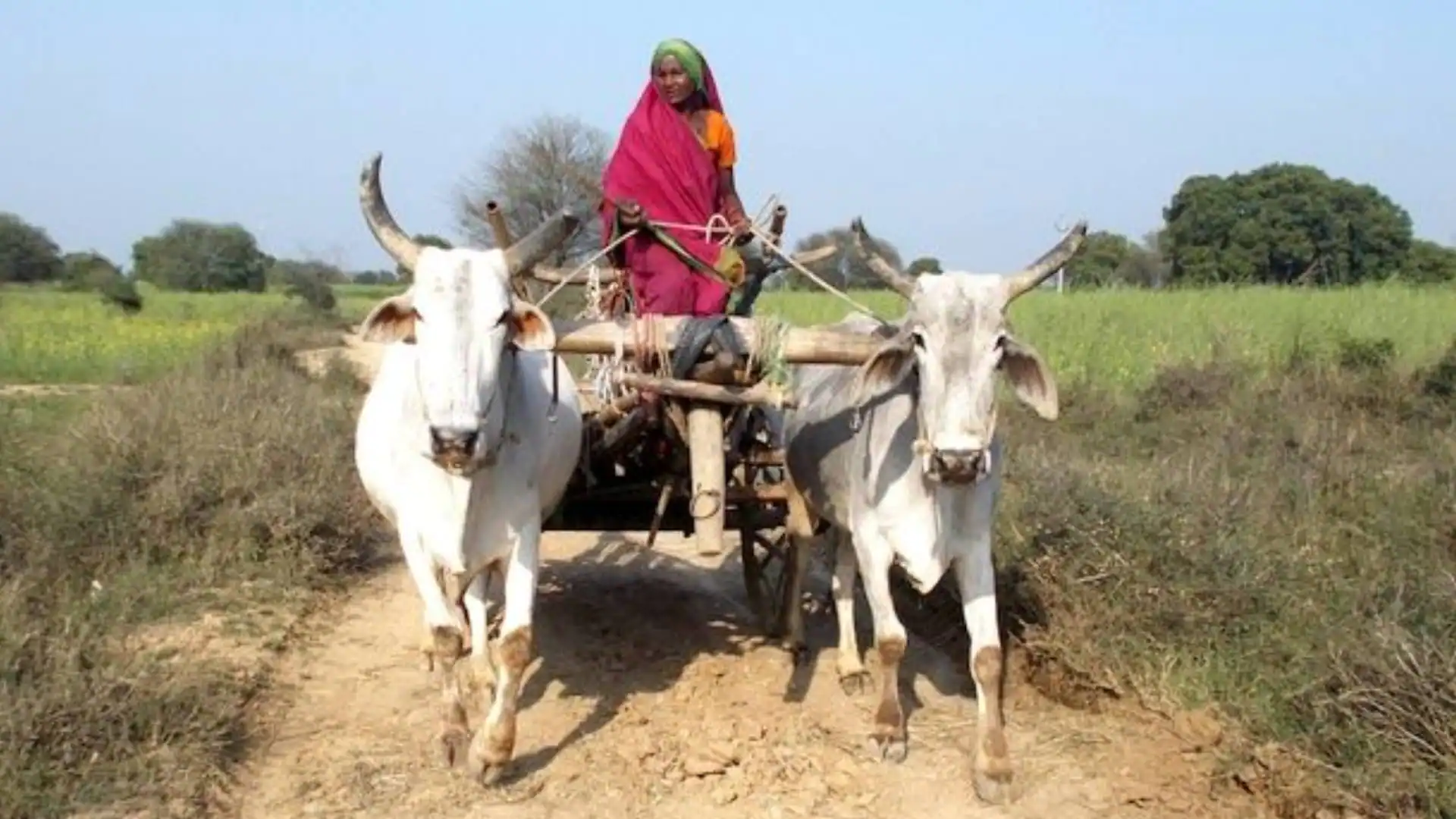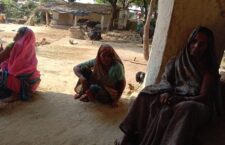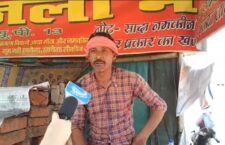While farmers (mostly men, some women) from Punjab, Haryana and other parts of the country gather on the border of the national capital to protest against the newly-passed farm laws, there is another reality that lies behind the glare of mainstream TV debates and Twitter hashtags: the women farmers of Bundelkhand — who are still some distance away from the political centre, still out toiling in the fields, still waiting on past promises.
For a special report on Rashtriya Kisan Diwas (National Farmers’ Day), our bureau chief Meera spoke to farm union leaders in Banda and on ground at the Singhu and Tikri protest sites via Zoom, but women farmers were largely missing from these political minefields. They have been out in the actual fields, where courtesy them, all the farm work is still going on, even though farmers from across the country are continuing to congregate and mobilise at the national capital borders.
Through the entirety of 2020, through the coronavirus pandemic and the subsequent lockdowns, we reported how women farmers in Bundelkhand couldn’t afford to “work from home” and continued to work in their fields — usually without masks, adequate health information or even basic provisions. Just a couple of months ago, 15 October was celebrated as Rashtriya Mahila Kisan Diwas, but the mahila kisan, ‘woman farmer’ has a long history of being magicked out of land records, employment data and even the title of ‘farmer’. While much ado was made about free ration under PM Garib Kalyan Yojana, and the announcement of direct bank transfers to bank accounts of daily wage workers, we found that most of these initiatives did not reach women farmers, even as their workloads grew.
The majority of Khabar Lahariya reporters are from farming families or have been farmers themselves. While some come from landowning families and others from landless ones, most belong to Dalit or OBC communities, who are the most vulnerable to any poorly designed or implemented policies. They know — from their lived and observed experience, as well as their years of reporting in the hinterland — what a mahila kisan might be thinking about when she wakes at 4 am to cook, then head to the fields until dusk while also handling childcare, tending livestock, care of the elderly, protecting the crop from grazing cattle from the gaushalas nearby and the myriad tasks that consume her days.
The unseen woman farmer
Farming has always been a woman’s game in India. They form the silent, unacknowledged backbone of the agrarian economy and farm culture, tirelessly working away in extreme and adverse conditions. Most of the non-mechanised farming activities such as sowing, winnowing and harvesting are solely done by women labourers. Recent statistics released by the University of Maryland and the National Council of Applied Economic Research state that women constitute 42 percent of the agricultural labour force but own only 2 percent of agricultural land.
For the women farmers of Uttar Pradesh, who are visible everywhere, but rarely seen in official policy, the new farm bills present bigger challenges even while their effects are poorly understood. In Banda, Vibha Khare of the local Market Committee explained, “If the market fee is only for inside the mandi, then all the traders will go outside the market. This will lead to exploitation of the farmers.”
For instance, Mahoba’s paan is famous all over Uttar Pradesh, but the women who harvest these betel leaves aren’t reaping the profits. Earlier this year, during the first wave of the pandemic, KL’s senior reporter Suneeta visited some women working on a paan farm in Mahoba. Phoolarani, a farm labourer, earns a meagre Rs 150 toiling through the day from 9 am to 6 pm in one of the betel leaf farms, sitting on their haunches with only a 30-minute lunch squeezed in between. “It’s back-breaking work and not even enough to feed my family. These days I feel like leaving this work and finding something else,” she says.
(Above: A farmer in Banda. Photo © Khabar Lahariya.)
The lockdown and rains have severely affected paan sales, further reducing their access to the means of production. “If I had my own farm, it would be different. Everything has become so expensive — the rent, kerosene, farm equipment, diesel etc., that we have no choice but to do khet mazdoori (daily wage farm labour),” adds Phoolarani. Maiki, an older farmer, says she’s spent the entirety of her youth growing and harvesting betel leaves. Her family enjoys eating paan but it never caught her fancy. The KL reporter notices the farm filled with only female labourers and Maiki is quick to point out that the “Maalik prefers us as we do the same work for Rs 150 that men charge Rs 200-250 for.”
But the majority of women farmers from the most marginalised and oppressed regions of rural Uttar Pradesh can hardly concern themselves with the farm bills, just like they could hardly concern themselves with the pandemic. “We searched high and low,” says KL bureau chief Meera, describing the search for mahila kisan opinions on the farm bills. “But the story of rural India is that the level of precarity is so high that people are only concerned with their immediate daily work — their crops and food for the day.”
For the most part, women farmers are not yet even aware of the farm bills. They are consumed instead by the daily problems that preceded the passage of these bills — like immense loans, no good harvest because of drought, water scarcity and the increasing costs of irrigation. As our reporters Meera, Geeta and Suneeta asked the women to comment, the common refrain in the fields was: “Nobody has given us any information. We don’t know anything about this. We are poor, we labour all day. We are not educated. How will we know?”
“We start working in the fields from 8 in the morning till 8 in the night. Often we go hours without eating or drinking water,” says Aarti, a 35-year old woman from the Sehariya farming community in Bargadh, Chitrakoot. Like many of her female peers, she too doesn’t have much information about the ongoing farmers’ protests because “Nobody tells us anything, be it the government, officials or even the Pradhan. We are illiterate farmers, and everyone just takes advantage of that. We did go to some rallies and told them about our struggles but till date we have received no relief, no benefits.”
Read als0 : The Women Farmers Battle a Pandemic on top of Systemic Exclusion
A Land of Her Own
Leading agriculture scientist and Rajya Sabha (2007-13) member Prof MS Swaminathan introduced The Women Farmers’ Entitlements Bill, 2011 in the Parliament on 11 May 2012. However, it ‘lapsed’ on April 10, 2013 without any support or interest to see it through. As stated in this PARI network report, Prof Swaminathan, in the Bill’s ‘Statement of Objects and Reasons’, noted that the dire consequences for women are compounded when agricultural distress, such as drought or erratic monsoon impels rural men to move to towns and cities in search of employment. “This had led to ‘an increasing feminisation of agriculture’, and women farmers experienced several handicaps related to land titles, access to credit, inputs, insurance, technology and the market.” Prof Swaminathan took note of the skewed gender dynamics in India’s agricultural sector and prosed this bill to safeguard the livelihoods of rural women. According to this report, the bill “sought to provide for the gender-specific needs of women farmers, protect their entitlements, and empower them with rights over agricultural land and water resources, and also access to credit, among other things.”
Phoolkali, a farmer from Kothi village in Chitrakoot, laments, “We don’t have much land, and it’s a lot of hard, laborious work that goes into farming. I do all the sowing, tilling, cutting, winnowing etc. During the harvest I am on standby, be it day or night. But it’s been 3 years since I stopped working on my own land. My 1.5 bigha land was flooded, so now no vehicle can even go there. In recent times I have only worked as a farm labourer wherever I could find work. I don’t know much about the farm bills, but the Modi government is yet to give me money for the 1.5 bigha land that I’ve lost. But what to even expect from the government didi…” and on that despairing note, she trails off.
Equal pay for equal work, a land of her own, and being front and centre of policy not political lip-service — that’s the faraway dream for India’s mahila kisan. So the next time you see powerful images of the protests led by male Indian farmers splashed across your screens and dailies, don’t forget the mahila kisaan tending to her fields away from the glare of the cameras, still putting food on our plates.
Written by Ritika Bhatia for Khabar Lahariya, based on field reporting by Meera Devi, Geeta Devi and Suneeta Devi.
Read also : Access, Redressal & Finance in Uttar Pradesh : The Farmers in Rural Uttar Pradesh
(हैलो दोस्तों! हमारे Telegram चैनल से जुड़े रहिए यहां)



